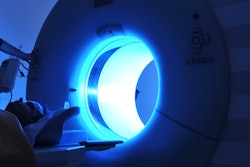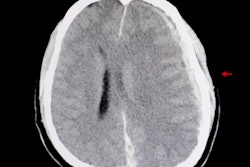
Offering financial incentives like cash to emergency patients with minor traumatic brain injury (TBI) to convince them to skip scans that might not be medically indicated may help reduce the rate of unnecessary head CT exams, according to an article published in the October issue of Academic Emergency Medicine.
The persistent upswing in emergency CT utilization in recent years, along with the high rate of unwarranted emergency head CT exams, has motivated providers to seek out ways to reduce unnecessary imaging and, in so doing, lower healthcare costs. One strategy has been to encourage shared decision-making between patients and physicians, with the hope that a unified decision might help minimize malpractice risk while also promoting value-based care.
But researchers from Michigan and Wisconsin went even further, exploring the possibility of using cash incentives and discussions about the benefits and risks of CT to dissuade patients from choosing to undergo a nonindicated head CT exam (Acad Emerg Med, October 2019, Vol. 26:10, pp. 1117-1124).
The group, led by Dr. Rahul Iyengar from Aurora St. Luke's Medical Center in Milwaukee, conducted a survey that asked emergency patients to consider a hypothetical scenario in which they had a minor TBI that did not warrant a CT scan (under the Canadian CT head rule) and then had to decide whether they still preferred to receive a head CT scan under several distinct circumstances:
- If the likelihood of detecting hemorrhage on CT was 1% versus 0.1%
- If the 10-year cancer risk from CT radiation was 0.1% versus 1%
- If the patient received $100 for not undergoing a CT scan
For the 913 survey participants, a $100 cash incentive led to the greatest decrease (11.7%) in the proportion of patients who would still choose to receive a CT scan. This drop exceeded the 10.2% decrease in CT due to a warning of increased cancer risk, and the 9.3% decrease in CT if patients were told the modality had a reduced likelihood of detecting hemorrhage.
| Factors that reduce unnecessary emergency head CT | ||||||
| Likelihood of detecting hemorrhage on CT | Cancer risk from CT radiation | Cash incentive | ||||
| Factor | 1% | 0.1% | 0.1% | 1% | $0 | $100 |
| % of patients who would still elect to undergo head CT | 58.9% | 49.6% | 59.3% | 49.1% | 60% | 48.3% |
"Decreased benefit [of CT], increased risk, and offering a financial incentive all significantly deterred participants from accepting low-value diagnostic testing," the group found. However, "financial measures may serve as a more effective deterrent against patient preference for diagnostic testing."
Though hypothetical in nature, the study's findings demonstrate that patients in today's healthcare system may be even more sensitive to costs than personal risk, Dr. Jesse Pines of U.S. Acute Care Solutions in Canton, OH, noted in an invited commentary.
"Ultimately, what is needed is a system where patients can get the right care with access to the best information on their options at a reasonable price. ... It is the challenge of our generation to move the broader system in that direction where care is more equitable, high quality, and safe and everyone's interests are most closely aligned," he wrote.




















